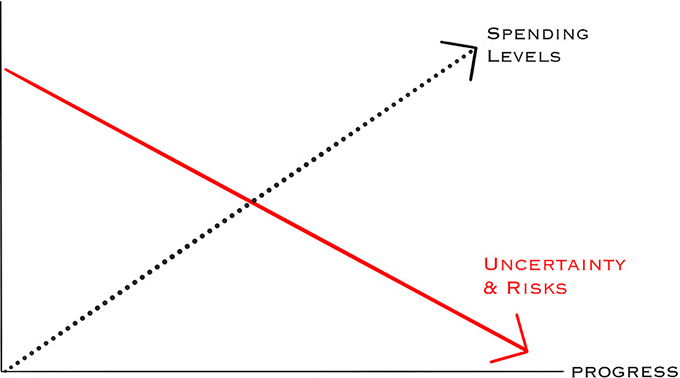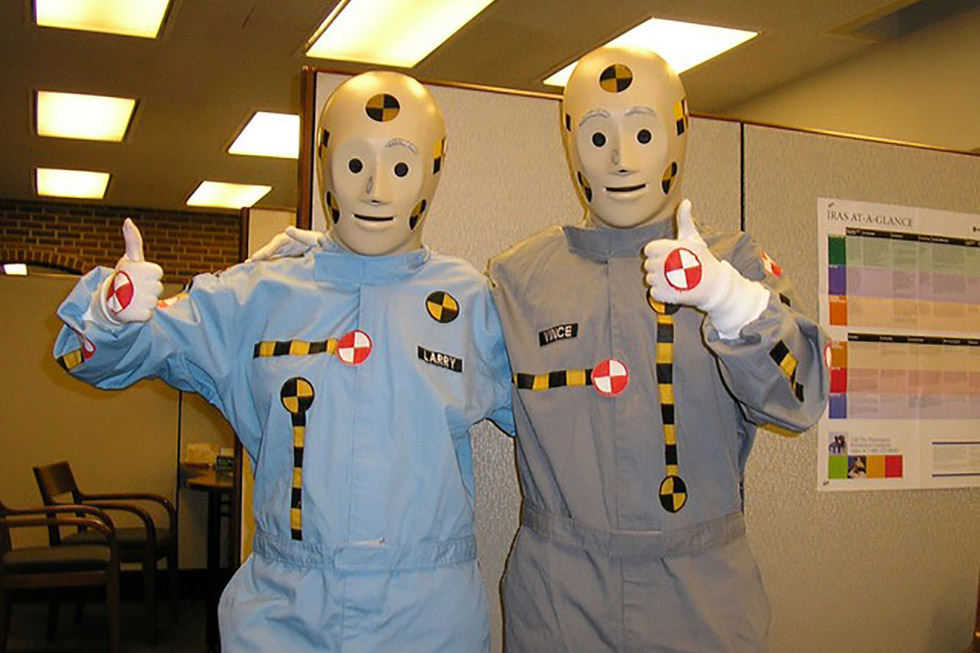Restaurants and crash test dummies!
2020.6.2The COVID-19 pandemic is pushing people to innovate. Beyond exploring new treatments and vaccines, they are exploring alternative ventilator construction, personal protective equipment production, and ways to contact trace. Now is a good time to thinking about practical, effective and ethical testing processes.
When I have an idea, I sometimes struggle to remain open to modifying it. Obviously, my idea is already the best, most perfect solution ever… right?! Of course not. Constructive criticism is essential. But I can still take feedback on my ideas very personally. But letting ideas, concepts, and entire solutions be transformed or completely scrapped based on feedback gained from testing is critical to innovating successfully and ethically. Our self-worth must remain detached from ideas and how we realize them; far better to be emotionally involved in the challenge itself, and the people for whom we are designing solutions.
Uncertainty/Risk should be inversely proportional to Investment
One good practice is to test solutions early. Testing before investing too much helps us to fail soon, learn lessons from that failure ethically (minimising resource investment and impact on others), and revise our solution. This is part of “human centred design”, an innovation approach that we champion at the MSF Japan Innovation Unit.
Bland and Osterwalder give a great guide for testing
Since you are diving in uncharted waters innovation entails high risks, meaning investment should be modest. The more knowledge you gather, the more you reduce risk and the more safely you can invest in reiteration and further development. This is precisely testing’s purpose.
Think of it this way: if you own a restaurant, you would never serve a new dish to your customers without first trying the recipe yourself, modifying it, potentially starting over (if you cook like me), readjusting version two with spices, and so on. You would probably test it with a few friends. Poor friends… but happy you: you did not waste money buying ingredients for all your customers before identifying what ingredients work best. And just as importantly, you revised and improved the recipe before the armchair critics on TripAdvisor got to weigh in…
Choose the right tests at the right time
Bland and Osterwalder identify 44 tests you can perform. Each varies in complexity, resource investment and what they tell you. A storyboard is perhaps one of the cheapest, easiest and fastest ways to get some feedback on your early concepts. You can see an example of one of our storyboard’s here. Because it explains a solution with a story using fictional characters, it can help you and those for whom you are designing to identify very early if the fundamentals of your proposed solution are valid. The storyboard helps answer the following questions: “Does the solution in the story work? does it make sense? Or should it be revised or scrapped?”
Meanwhile, creating an interactive protype is one of the most complex and resource intensive tests. MSF JIU is currently developing one such test for our Field Onboarding project. It explores how our solution interacts with its users. This is much more resource intensive, so we are only doing it after having conducted earlier tests to reduce uncertainty around our innovation significantly. Interactive prototypes, because they are real and users can ‘play’ with them, will help you understand if all the buttons that have to be pushed are in the right place, if the product or solution is easy to use or if there is anything awkward that can still be improved.
While tests differ in what they show, and the time and money they require, they share a basic methodological structure. They identify a testable hypothesis, determine what data can confirm or falsify that hypothesis, and then map how to collect and rigorously assess that data. Importantly, such tests are unlikely prove or disprove any hypothesis definitively. However, they can certainly inform your level of confidence in your hypothesis.
Remember: if that confidence is undermined, it is not personal! The important thing is not simply to fight for your idea; instead, be proud of allowing it to be modified or, if necessary, discarded at an early stage of development. This helps rapidly reduce the uncertainties surrounding innovation, and reveals new aspects of the problem you want to solve. This helps you design a better solution.
If you have an idea, TEST IT!

 by Unknown Author is licensed under CC BY-NC-ND
by Unknown Author is licensed under CC BY-NC-ND
- References:
- Bland, D., Osterwalder, A., Smith, A. and Papadakos, T. (2019) Testing Business Ideas. 1st ed. New Jersey: Wiley, p.93.
